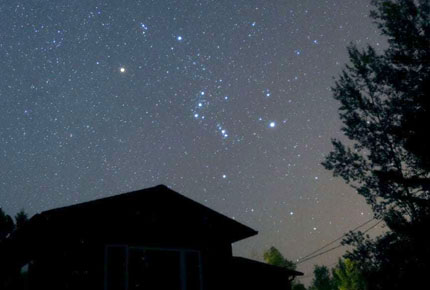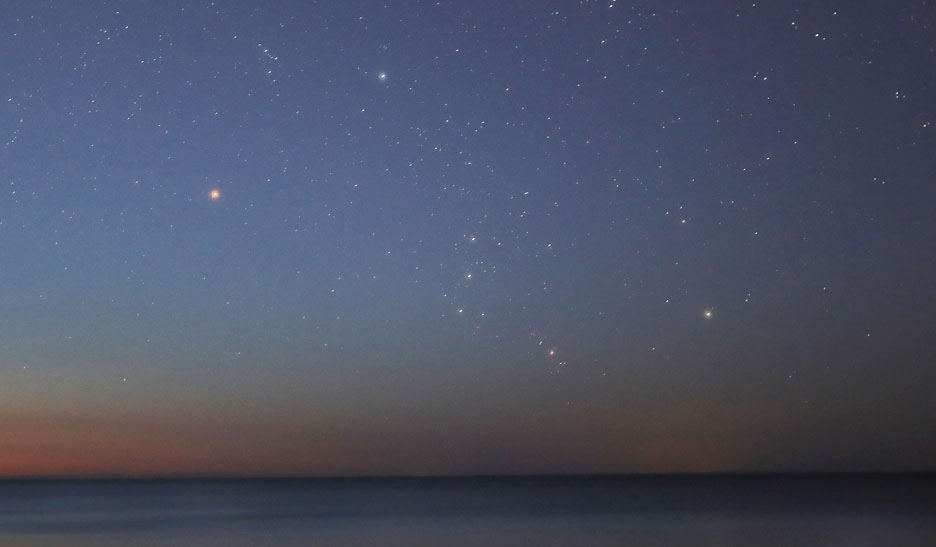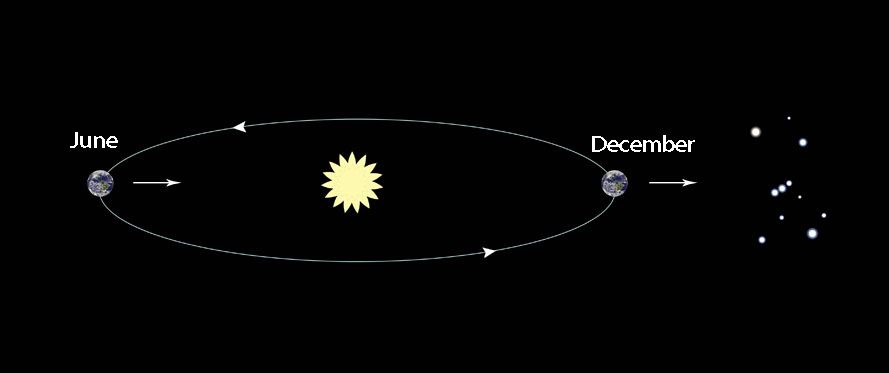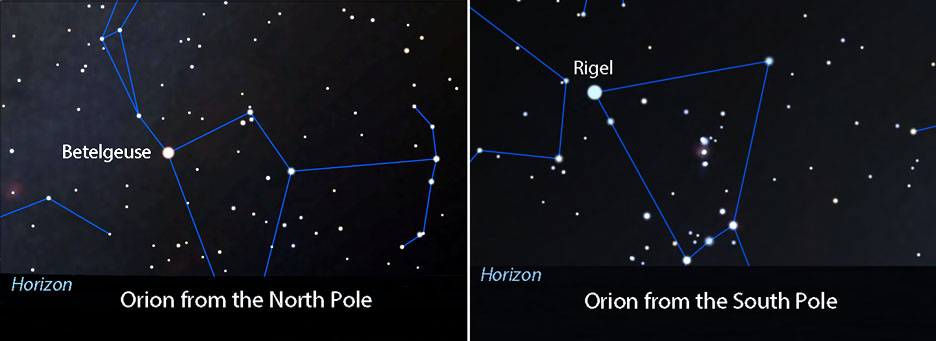An August jaunt at dawn reacquaints us with the harbinger of winter.

Bob King
If Orion's rising and you're watching it in shirtsleeves, life is good. Mercury, the Perseids, and the lure of morning comets tugged at me to stay awake until dawn this past week to see the Hunter reach a leg over the eastern horizon. Orion, a constellation normally associated with chattering teeth and biting winds for Northern Hemisphere skywatchers, returns to view during the dog days of summer when we need it most.
Orion's wintertime associations imbue its arrival with a "cooling effect" after weeks of heat and humidity. I laughed when I stepped out the door at 3 o'clock the other morning, looked up, and saw that Cassiopeia could also play that game. It finally hit me that W is the first letter in the word winter. Of course.

Bob King
I drove to a beach on Lake Superior and sprawled out on a bed of pebbles, the rounded remains of 1.1 billion-year-old magma that erupted long before the stars of Orion had even organized into a constellation. One by one the Hunter's patterned stars rose from the horizon haze as the Earth turned. First his shield, then by-and-by, Bellatrix, Betelgeuse, the Belt, and Rigel in that order. Bellatrix briefly outshone brighter Betelgeuse by dint of higher altitude and lessened atmospheric extinction, the dimming of a star due to low altitude haze. Not 10 minutes later the red supergiant had regained the upper hand.
Over the years I've been asked why certain constellations are only visible during certain seasons. A common question is why we can't see Orion in the summertime.

Bob King
Drawing circles in the air, we explain that Earth’s orbital motion makes the Sun appear to move across the sky day-to-day, week-to-week, and month-to-month. Every August the Sun slides eastward from the constellation Cancer into Leo, the Lion. Whatever constellation the Sun is near is invisible — lost in the glare of daylight. Orion was lost in that glare during May, June, and July because the Sun shone from Taurus and Gemini, constellations not far from the Hunter.

Stellarium
Earth has since moved along its orbit, shifting the Sun into Cancer, the Crab, far enough away from winter's signature constellation that it can roam free again in the pale dark of dawn. As the Sun continues to move eastward and out of the way, Orion will climb higher and higher until it's visible in total darkness before dawn (September) and then evenings (November).
I like seeing Orion while listening to the stridulations of katydids and lap of the waves before the sting of frozen fingers. The soonest I've sighted its return was this past July 30th when two-thirds of the famous figure rose from the chill waters of Lake Superior in a brightening sky. The Belt, pitched almost vertically, recalled a rope with regularly spaced knots for climbing. Binoculars gave the best view.

Stellarium
From my 47° N latitude the Belt tilts westward on rising, but from ~35° N latitude (Albuquerque, Oklahoma City) it ascends vertically in relation to the horizon. Curiously, the Belt is invisible from the North Pole, its northernmost star, Mintaka, with a declination of –0° 18′, remains just out of reach, about ¼° below the horizon. Meanwhile, observers at the South Pole can see the famous asterism for months on end very close to the northern horizon during polar winter. It may seem obvious but north is the only direction you can look from the pole. East and west are meaningless. No matter which "direction" you face you're always looking north. Similarly, all is south from the North Pole. No star rises, no star sets. The paths of all celestial objects are parallel to the horizon.
It gets weirder. Travel just a short distance from either pole and east and west suddenly materialize. The rising, culmination, and setting of the stars gives direction to all points along the horizon.
Funny how the mind drifts while watching Orion rise star by star. That's one of the best things about being a skywatcher — you're always along for the ride.
 12
12








Comments
Anthony Barreiro
August 14, 2019 at 12:51 pm
Thanks so much for these reflections, Bob. Here in San Francisco the past few days and nights have been very clear, after weeks of clouds and fog. I've been staying up late and getting up before dawn. The mornings have been enjoyably cool, and it's been a joy to see the Hyades and Pleiades for the first time this season. I've also found Neptune, Uranus, and Vesta, and of course Mercury. This morning was the first time Orion was up high enough during dawn to give a hint of M42 through binoculars, and today was the first day I saw Sirius rising before the Sun.
I've also been noticing the Sun rising later and setting earlier. As you say, it's a blessing to be along for the ride!
You must be logged in to post a comment.
Bob KingPost Author
August 15, 2019 at 2:34 pm
Hi Anthony,
Thanks! Nice to know we're fellow travelers.
You must be logged in to post a comment.
Rod
August 14, 2019 at 2:03 pm
Bob and Anthony, very good. On 12-Aug-19, I enjoyed views of Orion and Mercury as well as some Perseids. I was standing near the roadside by my neighbor's large horse farm, viewing the early morning sky - clear and cooler temps too. "Observed 0400-0530 EDT. Sunrise at 0617 EDT, the Moon set at 0326 EDT. Morning twilight filling the east sky by 0530 EDT,"
Orion from that big sky view was lovely. Now I must wait a bit - clouds developing and likely rain too 🙂
You must be logged in to post a comment.
Bob KingPost Author
August 15, 2019 at 2:33 pm
Way to seize the dawn, Rod!
You must be logged in to post a comment.
kevin-bourque
August 15, 2019 at 7:12 am
I always look forward to seeing Orion in August. It means the Humidity Festival will be over in a couple of months and we'll have cool weather again.
From my latitude (32.7N) Betelgeuse and Rigel rise less than a minute apart. Not that I ever actually see that happen, at least this time of year.
You must be logged in to post a comment.
Bob KingPost Author
August 15, 2019 at 2:32 pm
Kevin,
That's an intriguing observation possibility — seeing Rigel and Betelgeuse rise nearly simultaneously. I wonder which you'd see first. Red penetrates haze better, but then Rigel's a bit brighter than Betelgeuse. It would be very cool if you could attempt that observation and get back to us.
You must be logged in to post a comment.
Craig
August 16, 2019 at 4:37 pm
The Lake Superior region is the ancestral home of the Ojibwa people. I live in the U.P of Michigan so it is very relevant for me. This article reminded me of an earlier one about the Native American traditions associated with the stars of Orion. I went back and looked it up and found out that you had also written that one too. I want share it again for your readers. https://skyandtelescope.org/astronomy-blogs/make-way-wintermaker11122014bk/
You must be logged in to post a comment.
Bob KingPost Author
August 16, 2019 at 10:49 pm
Thank you, Craig 🙂
You must be logged in to post a comment.
Jprchri
August 16, 2019 at 4:59 pm
Great pic of Orion over Lake Superior... do you mind sharing the technical details?
You must be logged in to post a comment.
Bob KingPost Author
August 16, 2019 at 10:49 pm
Hi JP,
Thanks! That would have been a 35mm lens at f/2.8, 20 seconds and ISO 800 (I think).
You must be logged in to post a comment.
Jprchri
August 19, 2019 at 4:14 pm
Thanks!
You must be logged in to post a comment.
Fabrice Morat
August 17, 2019 at 5:50 am
Orion in august remembered me a fine view of M42 in my previous C14. It was the third decade of this month and in the dawn, colors bordering the trapezium were sublime and above all, easy to detect. Certainly the magic of mesopic vision with cones invited to the scene. Try this, you won't be disappointed.
You must be logged in to post a comment.
You must be logged in to post a comment.